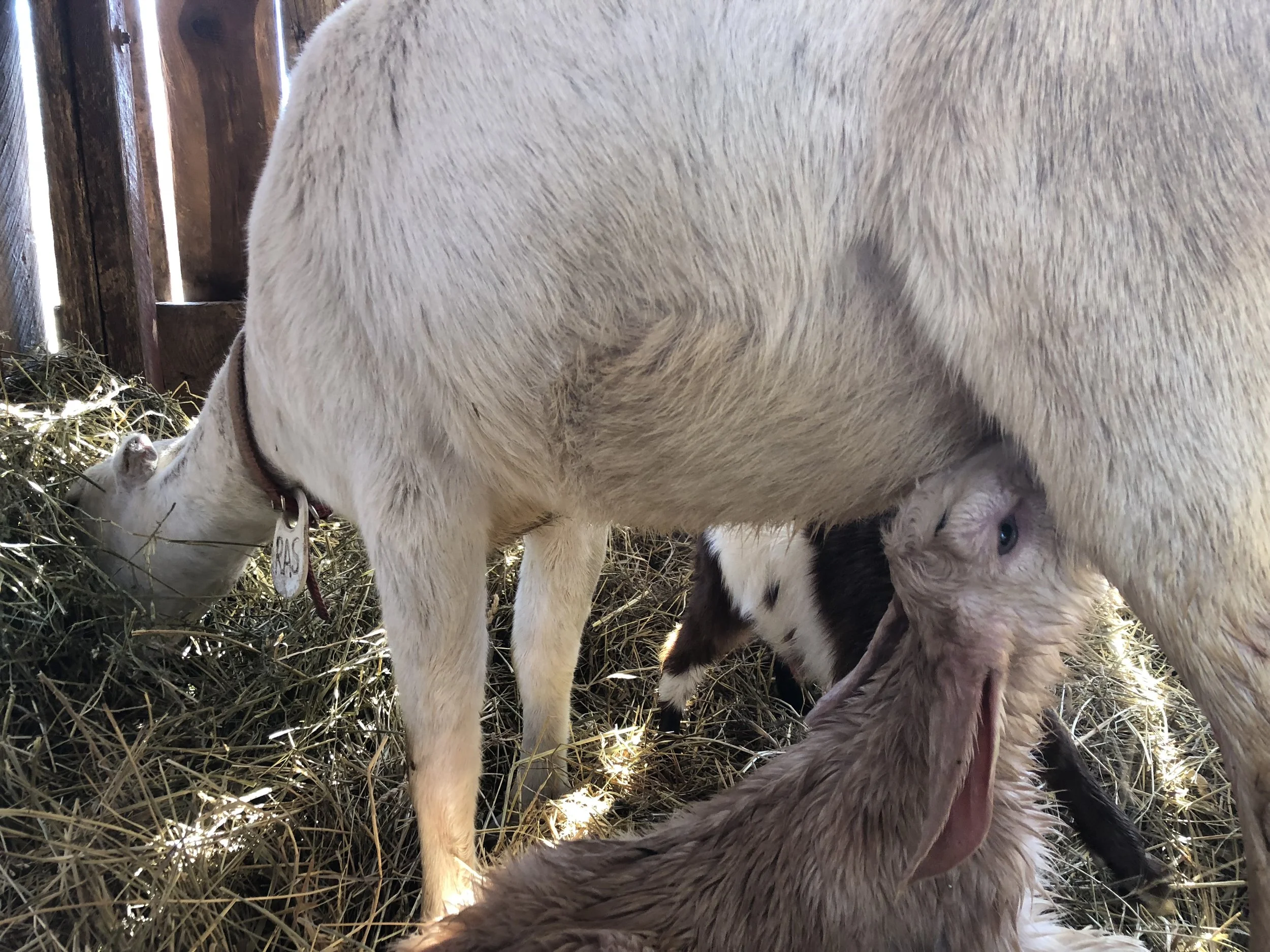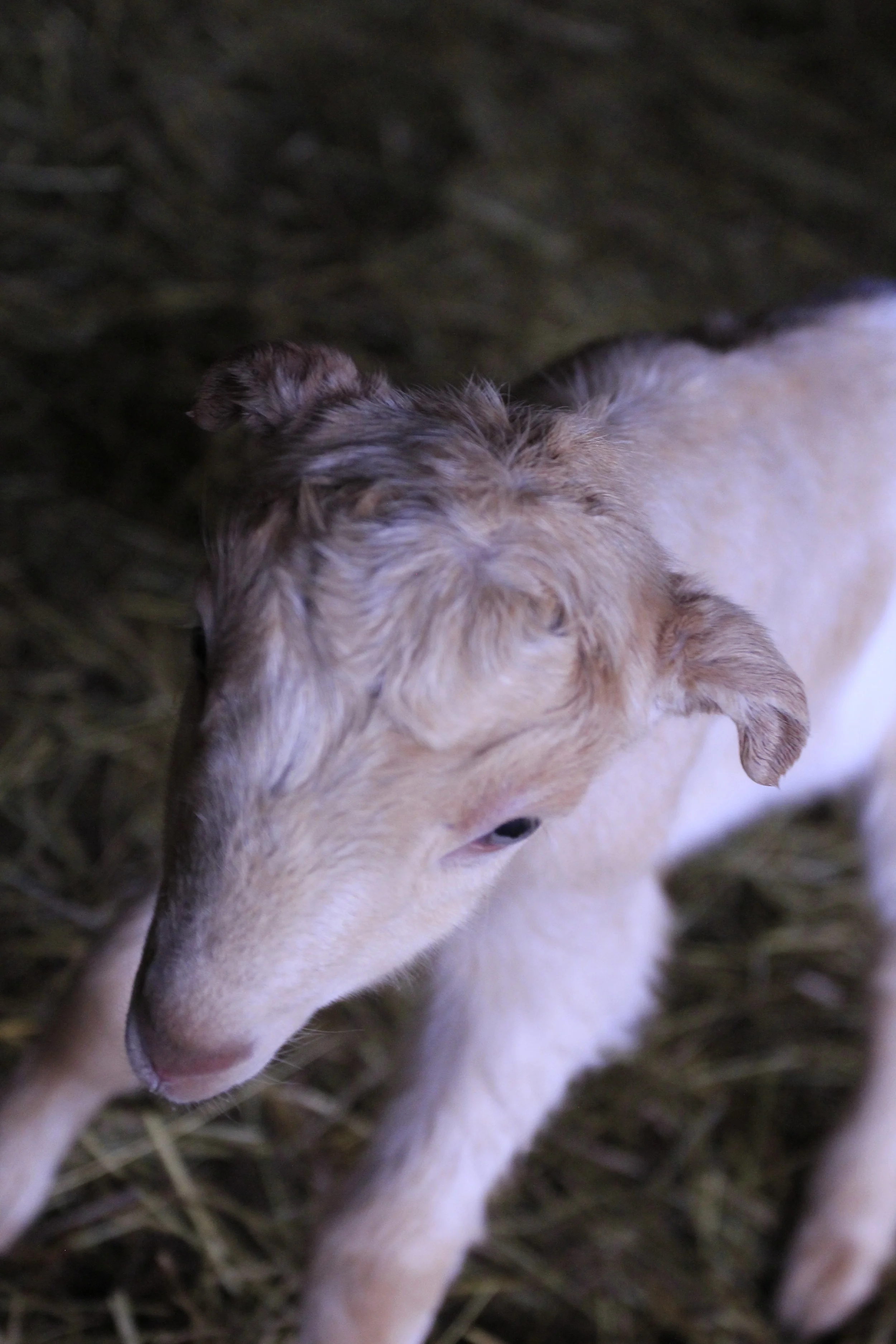How Do Goats Stay Warm in This Cold Weather?
Maggie Maginness
Did you think it was cold last week? This is how we keep the goats and kids warm in cold weather.
Read MoreUse the form on the right to contact us.
11351 Callahan Creek Rd
Harrisburg, MO, 65256
United States
Get the latest news on our farm and delicious artisanal cheeses made from the fresh milk of our very own pasture-grazing goats!
Did you think it was cold last week? This is how we keep the goats and kids warm in cold weather.
Read More
Ras el Hanout with the first kids of 2019.
With another winter storm headed our way with two to four inches of snow expected, most Missourians are probably wondering if spring will ever come. At Goatsbeard Farm, we know spring is near because kidding season has begun. On Tuesday, February 26, one of our two-year-old goats, Ras el Hanout, opened the kidding season right on time with twins, one male and one female. By Thursday morning, we already had 10 kids!
We have 40 mature goats and 10 yearlings. On average, each goat will have two kids. That means we expect about 80 kids over the next two months, with 15 -20 more a little later in the season (the yearlings are bred later and kid later, to give them more time to grow up before they get to work).
Kidding season is both a lot of fun and a lot of work. Jenn or another ‘goathand’ check the goats several times a day and assist deliveries when necessary—which isn’t often. Each new kid is given a temporary collar with the name of the mom and the sex of the kid and these details are recorded for future reference. We use newspapers and towels to dry the kids off, and make sure they figure out their first drink. The moms naturally lick the kids to clean and dry them, but we like to help the process along, especially in the cold weather.

Queen’s new kid, born over Wednesday night.
Meanwhile all the regular chores need to be completed. During the winter, the goats get grained once a day. We send them through the milking parlor in groups of eight so they can eat their grain and we can check on their health. Any new moms are usually penned up with their kids in a cozy corner to keep other goats from pestering them, so they have time to bond, and don’t have to make the trip to the milking parlor. We make sure each of the new moms has some hay and water and bring her some grain, too. We wait to see that each kid gets up and gets its first drink, and make sure the older kids look healthy and are able to nurse too.
If you find yourself frustrated with the lingering winter weather, just be glad that you are neither giving birth nor being born with only an unheated barn for shelter and hay for a bed. And trust that spring is coming and with it will be a growing herd of cantankerous and adorable new goats.
Maggie Maginness worked at Goatsbeard Farm as a morning milker and general ‘goathand’ for about a year and a half. When Jenn asked her if she wanted to milk in 2019, she gave it a lot of thought and finally answered, my heart says, yes, but my body says, no. She was thrilled when Jenn asked her if she would write for the blog and website instead. With a background in biology, education and journalism and a love of animals in general and goats in particular, Maggie thinks the only thing better than taking care of goats a couple times a week is writing about them.

Maggie bundled up to do winter chores at her own farm, where she cares for three horses, one mule, three chickens, one dog, three cats and three humans.

Third in our new label series is Moniteau Blue. Most mid-Missourians are probably familiar with the word "Moniteau," applied as it is to a local river, creek, county and probably more. The word dates back at least to the 17th century and derives from "manitou," an Algonquin Native American term for "Great Spirit." The spelling was changed to "Moniteau" when French explorers named waterways in the Rocheport area.
In 1804 Lewis and Clark camped at the convergence of the Missouri River and Moniteau Creek, very near the spot which would become Rocheport. Clark noted the red pictographs drawn by early Native Americans, probably Osage, high on the limestone bluffs along the river and creeks. The three symbols reproduced on our label are from William Clark's own drawings, dated June 5-7, 1804, in the Lewis and Clark Journals. Tying it all together is the thin line of blue water running through the center of the label.
Of course there is no way to know exactly what each symbol represents, but it is thought the first is a depiction of the Manitou, or Great Spirit, which is usually a human-like figure with what appear to be antlers emerging from the head. The central symbol is believed to be a buffalo and the third a human with upraised arms.
Unfortunately, dynamite and picks destroyed most of the pictographs when the Rocheport Tunnel was built in 1892.

We love our blue cheese and its label. The cheese is made entirely of goat milk from our own herd. The cheese wheels, each weighing about 6 pounds, are pierced after four days. This allows air to develop the signature blue mold as the cheese is aged over the next 6-8 months, resulting in a finished cheese with its sharp, distinctive blue cheese flavor. Four ounce wedges of the cheese are available at the Columbia Farmers' Market. Try some!